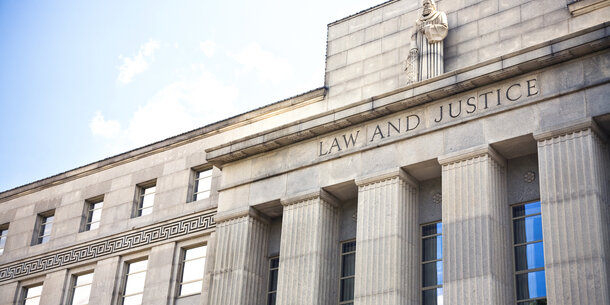In 28 states this fall, voters are choosing judges for their state’s highest court — a role that has become even more important in Americans’ lives in the wake of the U.S. Supreme Court’s recent decisions. In Dobbs and other cases, the nation’s highest court has retreated from protecting key rights and democratic values and, by doing so, has made state courts crucial battlegrounds going forward.
At least some special interest groups have long understood that the highest state courts often have the final say on major legal questions with big consequences for individuals, businesses, and the balance of political power. As more and more groups have recognized how powerful these courts are, once sleepy judicial elections have attracted even more money in recent cycles. As a result, the 2020 cycle was the most expensive ever for state supreme court elections, with nearly $100 million spent by candidates and interest groups combined.
As in prior cycles, the Brennan Center has tracked spending and TV ads in judicial elections in real time. So far, we have identified the following trends.
The most expensive races are those where a court majority is at stake
In tracking state supreme court elections for more than 20 years, we have found that the elections that attract the most money are often those that could flip the ideological or partisan majority on a court.
That trend has continued this year. The three states that have seen the highest spending so far — Illinois, North Carolina, and Ohio — are all holding multiple partisan judicial elections that will determine whether Democrats or Republicans comprise a majority on those courts. Illinois has seen by far the most spending at this point, including at least $6.5 million from the two largest outside interest groups alone — $1.5 million supporting the Democratic candidates and $5 million supporting the Republican candidates.
With at least $1.4 million in interest group spending already, Montana is seeing its most expensive judicial election ever. While the majority on the Montana Supreme Court won’t change as a result of this nonpartisan election, groups on the right are spending to unseat Justice Ingrid Gustafson, who was appointed by a former Democratic governor, just as the court is poised to decide key questions about voting rights and abortion access. The court has also clashed with the new Republican governor and legislature who see it as a barrier to their policy priorities.
Because spending in state judicial elections often picks up significantly in the final weeks, however, and groups can delay reporting that spending, it is still too early to tell which other states will break spending records.
There is a mix of familiar and new groups spending in judicial races
The biggest spender in state supreme court elections over the last decade has been the Republican State Leadership Committee, spending $21 million to influence judicial elections across the country since 2012. In February, the group committed to “spending more on state court races this year than any year prior,” and it has already spent at least $650,000 in Montana and $375,000 in Kentucky, and as well as reserved $2 million worth of TV air time in Ohio.
But there are also new conservative groups involved this year. A fundraising proposal by Fair Courts America, a subsidiary of Restoration PAC (funded by Illinois billionaire and GOP megadonor Richard Uihlein), says it is hoping to spend more than $20 million on key judicial races across the country, including in Kentucky and Illinois, where it is running TV ads. In North Carolina, another new group branded itself True Conservative Judges when it spent $500,000 to support its preferred Republican candidate in the primary this spring. Just this month, it rebranded as Tough and Fair Judges as it geared up to support the same candidate in the general election.
Groups on the left haven’t made similar statements about their commitment to judicial races, but many are active. Two of the biggest spenders, Ohioans for Justice & Integrity and North Carolina Families First have reported $500,000 and $900,000, respectively, on ads supporting Democratic candidates and Montanans for Liberty and Justice has spent at least $325,000 to support Gustafson.
Judicial campaigns have a new focus on abortion
The spotlight on state supreme courts is brighter than ever this year in large part because the Supreme Court’s decision in Dobbs ensures that many state high courts will be asked whether state constitutions guarantee abortion access. As a result, progressive groups have made the fight over abortion access central to these elections. Progressive groups in North Carolina, Ohio, and Illinois, for example, are running ads centering abortion and telling viewers that the Republican judicial candidates will allow legislators to criminalize abortion.
Even some candidates have taken public stances on abortion access in their states, though they have been met with controversy. In Illinois, the Republican Party demanded that Justice Mary O’Brien take down an ad that said her opponent “agreed with the decision to overturn Roe.” And in Ohio, ethics lawyers expressed concern that three justices who responded to a Cincinnati Right to Life candidate survey may have appeared to prejudge a case when they said that the Constitution does not include a right to abortion.
What we know about the real sources of group spending
Where are these groups getting their money? Many of them raise funds from other opaque groups and don’t report major transactions until after Election Day, making it impossible for voters or investigators to know for sure who is funding the judicial spending. In North Carolina, for example, both Tough and Fair Judges and Families First report other opaque sources as their funders.
Sometimes IRS filings provide clues as to who is funding this spending. The Republican State Leadership Committee, for example, reported in its most recent IRS filing that it received $1.85 million from the Judicial Crisis Network this year. That group was conceived by Leonard Leo, co-chair of the Federalist Society, who oversees a sprawling dark money operation that has also been the leading source of dark money supporting Republican nominees to the U.S. Supreme Court.
Some groups are more transparent, though. In Illinois, for example, All for Justice, the leading spender supporting the Democratic candidates, reports its largest contributions are from labor unions trial lawyers, while Citizens for Judicial Fairness reported a single $6.25 million contribution from hedge fund manager and Republican donor Kenneth Griffin.
• • •
The amount of money that special interest groups spend in judicial elections and the content of their ads can have a significant impact on how those courts operate. Research shows that judges are more likely to rule in favor of donors and political parties in election years and more likely to rule against criminal defendants out of fear of being portrayed as “soft on crime.”
All of this nontransparent spending hides from voters crucial information about who is trying to sway their vote and what conflicts of interest their judges might have. At a time when the public is becoming aware of how important state courts are, people must know who is trying to influence who sits on their courts.



